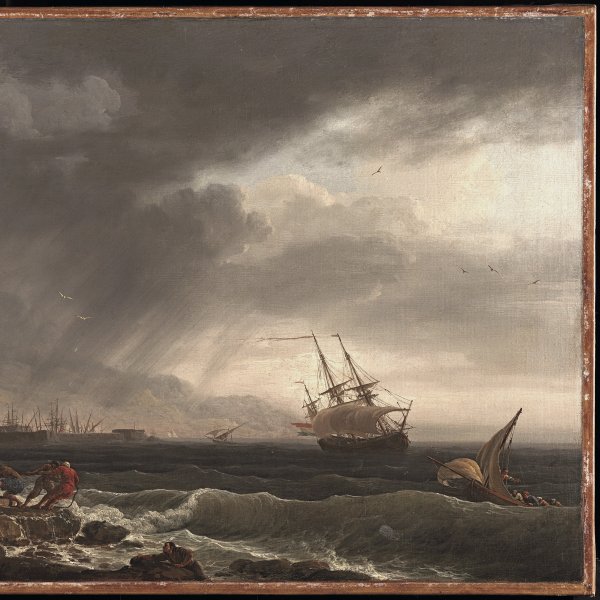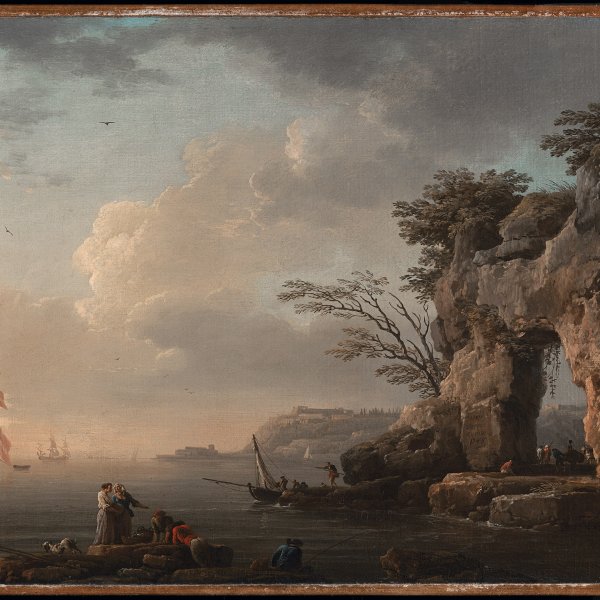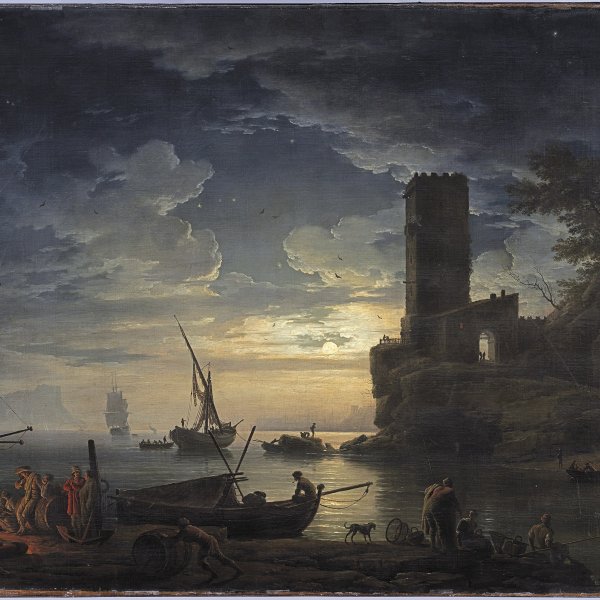Claude-Joseph Vernet
Avignon, 1714-Paris, 1789
Member of a family of artists, Claude-Joseph Vernet initially trained in Avignon, firstly with his father, Antoine Vernet, then with the history painter Philippe Sauvan. After this early training Vernet studied in Aix-en-Provence with the painter of landscapes and marine views Jacques Viali. His first project as an independent painter was a series of decorative paintings that he executed in 1731 for the hôtel of the Marquis of Simiani in Aix, of which two are still in situ.
Sponsored by the Marquis of Caumont, in 1734 Vernet travelled to Rome to complete his training. He immediately associated with the community of French artists living in the city and with members of the French Academy in Rome. By around 1738 Vernet was an established landscape and marine painter and received commissions from prestigious clients of various nationalities, including the Duke of Saint-Aignan, French Ambassador in Rome, and Isabella Farnese, wife of Philip V of Spain. He also had numerous clients among the British aristocrats making the Grand Tour. From 1746 when he was admitted to the Académie Royale, Vernet regularly exhibited at the Salon where his works were well received by critics.
Shortly after his return to France in 1753 Vernet embarked on a commission for Louis XV to depict fifteen large topographical views of ports, known as The Ports of France (Musée du Louvre, Paris, and Musée National de la Marine, Paris). This ambitious project, which occupied the artist for more than ten years, obliged him to travel around France until 1765 when he abandoned it unfinished. For the rest of his career Vernet continued to execute paintings on his preferred themes: Italianate landscapes, ports, and storms at sea.
Sponsored by the Marquis of Caumont, in 1734 Vernet travelled to Rome to complete his training. He immediately associated with the community of French artists living in the city and with members of the French Academy in Rome. By around 1738 Vernet was an established landscape and marine painter and received commissions from prestigious clients of various nationalities, including the Duke of Saint-Aignan, French Ambassador in Rome, and Isabella Farnese, wife of Philip V of Spain. He also had numerous clients among the British aristocrats making the Grand Tour. From 1746 when he was admitted to the Académie Royale, Vernet regularly exhibited at the Salon where his works were well received by critics.
Shortly after his return to France in 1753 Vernet embarked on a commission for Louis XV to depict fifteen large topographical views of ports, known as The Ports of France (Musée du Louvre, Paris, and Musée National de la Marine, Paris). This ambitious project, which occupied the artist for more than ten years, obliged him to travel around France until 1765 when he abandoned it unfinished. For the rest of his career Vernet continued to execute paintings on his preferred themes: Italianate landscapes, ports, and storms at sea.





